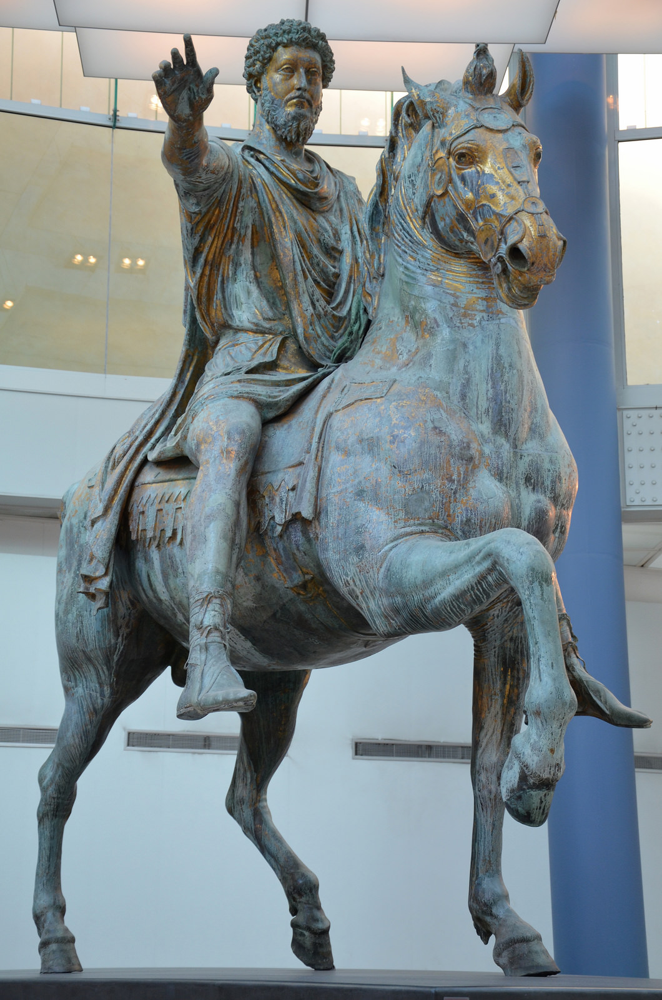Research on Stoicism
생성일: 2025년 3월 7일
답변에 사용된 모델 Deep Research by Chat01
생성일: 2025년 3월 7일
답변에 사용된 모델 Deep Research by Chat01
请问您希望研究斯多葛派的哪些方面?例如:
请提供更多具体方向,以便我能进行深入研究并提供最符合您需求的内容。
我将进行深入研究,探讨斯多葛派哲学的主要思想和核心概念,以及如何在现代实践斯多葛哲学。此外,我会简要介绍斯多葛派的历史发展、其对现代哲学与心理学的影响,并提及代表人物及其著作。
我会整理相关英文资料,并用中文呈现结果。研究完成后,我会通知您查看。
斯多葛派哲学(Stoicism)是古希腊化时期兴起的一种哲学流派,由芝诺(Zeno of Citium)于公元前300年左右在雅典创立 en.wikipedia.org 。作为一种重视德性的哲学体系,斯多葛学派主张通过培养美德来获得幸福(古希腊语“eudaimonia”,意为幸福或卓越的人生) en.wikipedia.org 。斯多葛哲学不仅在古代希腊和罗马广泛传播,而且其思想对后世哲学和现代心理学都有深远影响 iep.utm.edu 。现代社会中,斯多葛哲学作为一套人生实践哲学再次流行,人们尝试将其智慧应用于日常生活,以获得内心的平静与坚韧。
斯多葛派的核心思想围绕德性、理性与自然展开,强调通过内在的品德修养来应对外在境遇。主要理念包括:
德性是唯一的善:斯多葛派认为,衡量人生幸福的唯一标准是德性,即道德上的卓越和良善 en.wikipedia.org 。财富、名誉、健康等外在境遇本身并非善或恶,而是*“无差别之物”*(adiaphora),只有当它们成为实践美德的材料时才有价值 en.wikipedia.org 。因此,真正的幸福不依赖外在条件,而源于我们是否具备智慧、勇气、正义、节制等四大核心美德 dailystoic.com 。正如史料所述:“德性本身足以带来幸福”,一位真正贤明的斯多葛智者即使身处不幸仍能保持心灵的安宁 en.wikipedia.org 。
顺应自然,遵循理性:斯多葛哲学强调生活应当遵循自然(living in agreement with nature),这里的“自然”既指宇宙的理性秩序,也指人自身的理性本性 dailystoic.com stoiczone.com 。斯多葛学派相信整个宇宙是一个充满理性和目的的整体,受一条贯穿万物的逻各斯(logos,即宇宙理性)所支配 dailystoic.com 。人作为有理性的生物,应该使自己的意志与宇宙理性和谐一致,这样才能过上“顺应自然”的生活 dailystoic.com 。换言之,我们应运用理性指导行为,不为不符合自然与理性的欲望所奴役,并接受宇宙运行的必然法则。斯多葛派甚至持一种决定论观点,认为万事皆有因果必然,人应当心悦诚服地接受命运的安排:正如斯多葛哲学家克里安西斯所比喻的,“作恶之人就像被拴在车上的狗,不得不被车子拖着走” en.wikipedia.org 。明智的人则会主动配合车子的方向,将自己的意志调整为与世界的进程一致,从而达到内心平静。
情绪与判断:斯多葛学派以理性克制情绪闻名。他们并非提倡完全压抑情感,而是主张区分理性的情感和破坏性的激情。斯多葛哲学家认为,人之所以产生痛苦的情绪,往往是因为对事物抱有错误的判断 en.wikipedia.org 。事物本身并不直接决定我们的情绪,我们对事物的看法和评价才是关键 en.wikipedia.org 。例如,艾比克泰德(Epictetus)教导学生:“并非事物本身扰乱人心,而是人对事物的判断导致了烦恼” en.wikipedia.org 。因此,通过训练理性思维,我们可以纠正错误观念,从而避免愤怒、恐惧、嫉妒等破坏性情绪的支配 en.wikipedia.org 。斯多葛理想的人格(即“贤人”)应当达到apatheia的境界,既对不受自身控制的外界变化保持淡定,又对道德善恶保持正当的情感响应。用斯多葛的话来说,就是培养“心随理转”的能力,以冷静、清明的心态面对人生起伏。
可控与不可控的二分:斯多葛哲学教导我们明确区分生活中哪些是我们可控的,哪些是我们不可控的,从而专注于自身能掌握的部分。这一理念被称为控制二分法(dichotomy of control)。艾比克泰德在其《手册》开篇便指出:“有些事由我们掌控,而有些事不在我们掌控之中。由我们掌控的是我们的判断、动机、欲望和厌恶等行为;不由我们掌控的则是身体、财产、名誉等外界之事” en.wikipedia.org 。斯多葛哲人据此主张,应当将精力放在自身思想和行为上,对于健康、财富、生死等不可完全掌控之事要坦然接受 dailystoic.com stoiczone.com 。通过“不纠结于无法左右的外物”,人可以保持内在的稳定与平和,不因外界的得失而大喜大悲 dailystoic.com 。这种心态在逆境中尤为宝贵:即使遭遇疾病、贫困或不幸,依然能够“宠辱不惊”,坚守道德原则,视美德为唯一重要之事 dailystoic.com en.wikipedia.org 。
世界公民与社会责任:斯多葛派的伦理观不仅关注个人修养,也强调个体在社会中的责任。芝诺是第一位将“义务(希腊语 kathekon)”作为伦理核心的哲学家,他认为每个人都有义务在家庭和社会中恰当地履行自己的角色 dailystoic.com 。斯多葛学派主张“大同世界”或“世界城邦”的思想,认为全人类共享同一个理性,并因此组成一个普遍的共同体 dailystoic.com 。每个人都是“世界公民”,应彼此视为兄弟姐妹,以善意和正义对待他人。这意味着斯多葛追随者应关心公共事务,在力所能及时参与社会和政治生活,为公共利益服务 dailystoic.com 。例如,晚期斯多葛派哲人中就有罗马皇帝和政要将此理念付诸实践。简而言之,斯多葛伦理要求我们胸怀天下:既通过内在美德完善自我,又以理性和善意贡献社会。
以上思想共同构成了斯多葛哲学的道德蓝图。在斯多葛派看来,一个理想的人生就是以理性为指南,培养美德,顺应宇宙的自然秩序,尽己之责地生活。当一个人做到了这些,他便达到了心灵的平静和坚韧,对外在境遇“泰然处之”,实现了真正的幸福 en.wikipedia.org 。
希腊时期:斯多葛学派由哲学家芝诺在雅典的市集柱廊(Stoa Poikile,意为“彩绘门廊”)开讲而得名 iep.utm.edu 。“斯多葛”一词源自他讲学的门廊(Stoa) iep.utm.edu 。芝诺的思想继承了苏格拉底和犬儒派等先辈哲学的影响,又与同时期的怀疑论、柏拉图学派、亚里士多德学派、伊比鸠鲁学派等展开过激烈辩论 iep.utm.edu 。芝诺之后,克里安西斯(Cleanthes)继任学派领袖,进一步阐扬“合乎自然生活”的理念 dailystoic.com 。第三代领袖克里西波斯(Chrysippus)是斯多葛体系的集大成者,他著述极为丰富,传说撰写了超过300部关于逻辑、伦理等主题的著作,对斯多葛学说的体系化奠定了决定性基础 en.wikipedia.org en.wikipedia.org 。在早期斯多葛(前3世纪)的努力下,斯多葛派逐渐成为希腊化时代最具影响力的哲学流派之一 en.wikipedia.org 。
过渡与罗马时期:公元前2世纪晚期至前1世纪,被称为“中期斯多葛”的阶段,代表人物有潘埃提乌斯(Panaetius)和波西多尼乌斯(Posidonius)等 iep.utm.edu 。潘埃提乌斯将斯多葛思想引入罗马,上流社会的罗马人士(如西庇阿等)开始接受斯多葛理念 dailystoic.com 。其弟子波西多尼乌斯更是融会贯通多种学识,使斯多葛哲学与当时的科学、柏拉图主义思想相结合。到了罗马帝国时期(晚期斯多葛),斯多葛哲学思想在罗马达到鼎盛,涌现出一批用拉丁文或希腊文著述的斯多葛哲学家。其中最著名的包括塞涅卡(Seneca)、穆索尼乌斯·鲁弗斯(Musonius Rufus)、爱比克泰德(Epictetus)和罗马皇帝马可·奥勒留(Marcus Aurelius)等 iep.utm.edu 。斯多葛哲学在罗马社会尤其精英阶层中广受欢迎,许多政治家、思想家都自称斯多葛的追随者 thecollector.com 。例如,塞涅卡不仅是哲学家,还是罗马皇帝尼禄的导师;马可·奥勒留更是将斯多葛原则应用于治国理政,并留下了不朽的哲学笔记。
衰落与复兴:斯多葛学派在古代的兴盛一直持续到公元3世纪左右 en.wikipedia.org 。随着4世纪罗马帝国改宗基督教,斯多葛哲学的影响开始式微 en.wikipedia.org ——基督教神学取代了古典哲学成为主流思想体系,斯多葛学派也逐渐失去官方支持。一些斯多葛思想被早期基督教思想家吸收(如对德性、意志的强调),但作为独立学派已不再活跃。公元529年,拜占庭皇帝查士丁尼下令关闭雅典的哲学学院,标志着包括斯多葛学派在内的古典哲学体系在制度上的终结 iep.utm.edu 。然而,斯多葛思想并未就此消失。在之后的文艺复兴时期出现了对斯多葛主义的新兴趣(史称“新斯多葛主义”,如16世纪哲人尤斯都斯·利普修斯就提倡融合斯多葛哲学与基督教伦理) en.wikipedia.org 。进入近现代以来,斯多葛哲学作为实践智慧多次复兴,尤其是在21世纪初重新得到广泛关注 iep.utm.edu 。当代的“斯多葛主义”复兴运动(Modern Stoicism)通过出版物、线上课程和活动(如年度的“斯多葛周”活动)等,鼓励公众以现代方式研习并实践这一古老哲学。斯多葛派历经两千年仍历久弥新,证明了其理念在不同时代的适应力和吸引力。
斯多葛哲学对西方思想传统产生了深远影响,在道德哲学和心理学领域均留下重要遗产。
对哲学的影响:许多后世哲学家从斯多葛思想中汲取了灵感和养分 iep.utm.edu 。例如,文艺复兴和启蒙运动时期的思想家广泛阅读斯多葛著作;托马斯·莫尔、笛卡尔、斯宾诺莎、卢梭、亚当·斯密、康德等都不同程度地受到了斯多葛伦理观的启发 iep.utm.edu 。其中,斯宾诺莎的哲学体系就体现出与斯多葛相似的理性一元论和情感观:他和斯多葛一样将神等同于自然,主张人应以理性能动地认识并接受必然的因果秩序 en.wikipedia.org 。笛卡尔在论述情绪时亦参考了斯多葛对于通过理性节制欲望的看法。而在英国道德哲学传统中,斯多葛关于遵循自然理性和普世伦理的理念也影响了斯密等伦理学家对于同情心和道德情感的探讨。此外,斯多葛派作为德行伦理学的代表,在20世纪被重新评价和复兴,激发了当代一些德行伦理学者(如麦金太尔)的兴趣,将其与亚里士多德伦理并列为重要道德哲学传统 iep.utm.edu iep.utm.edu 。
对心理学的影响:斯多葛哲学在现代认知心理疗法中扮演了奠基性的角色 en.wikipedia.org 。20世纪后期发展起来的认知行为疗法(CBT)明确承认其哲学渊源可以追溯到斯多葛学派 en.wikipedia.org 。例如,认知疗法创始人阿伦·贝克在其治疗抑郁的手册中指出:“认知疗法的哲学起源可追溯至斯多葛哲学家” en.wikipedia.org 。另一位心理治疗先驱艾利斯(Albert Ellis)创立的理性情绪疗法(REBT)也深受艾比克泰德思想影响——艾利斯常在治疗一开始就教导来访者艾比克泰德的名言:“使人痛苦的并非事物本身,而是人对事物的看法” en.wikipedia.org 。这种观点与认知疗法的核心原则(我们的想法影响情绪和行为)不谋而合。可以说,斯多葛关于通过转变观念来消除不良情绪的理念,直接预示了现代认知疗法的基本思路 en.wikipedia.org en.wikipedia.org 。不仅如此,早在20世纪初,就有心理治疗先驱(如瑞士神经学家保罗·杜波伊)在临床中借鉴斯多葛思想,甚至让患者研读塞涅卡的段落作为“家庭作业” en.wikipedia.org 。时至今日,斯多葛哲学仍被视为提升心理韧性和情绪管理的宝贵资源。例如,有心理研究指出练习斯多葛式的认知重构和精神训练(askēsis)有助于改善情绪稳定性,减轻抑郁和焦虑倾向 en.wikipedia.org en.wikipedia.org 。总之,在心理健康领域,斯多葛那句“专注于你能控制的,接受你不能控制的”已成为广为人知的箴言,其智慧融入了现代心理疗法和自助实践中。
 公元2世纪的罗马青铜骑马像,展示了一位奉行斯多葛哲学的罗马皇帝的形象。在罗马帝国后期,斯多葛派思想不仅是哲学学说,更对统治者的个人修养产生影响。
公元2世纪的罗马青铜骑马像,展示了一位奉行斯多葛哲学的罗马皇帝的形象。在罗马帝国后期,斯多葛派思想不仅是哲学学说,更对统治者的个人修养产生影响。
斯多葛学派历史上涌现出许多杰出的哲学家。以下是几位主要代表人物及其相关著作:
芝诺(Zeno of Citium,约前334–前262年):斯多葛学派创始人,来自塞浦路斯的商人出身哲学家。他在雅典“彩绘门廊”讲学,提出“按照自然生活”和“德福一致”等理念 dailystoic.com 。芝诺的著作包括《共和国》等,但大多已佚散,仅存片段由后人引用保存。
克里西波斯(Chrysippus,约前280–前206年):早期斯多葛学派最重要的思想家之一,曾继任学派学头。他以渊博的学识和著述闻名,传说撰写了705部卷帙(约相当于300部著作),涵盖逻辑、物理和伦理各方面 en.wikipedia.org 。克里西波斯奠定了斯多葛逻辑学的体系,使斯多葛哲学体系臻于完善 en.wikipedia.org 。可惜其著作亦仅存零散残篇。
塞涅卡(Lucius Annaeus Seneca,前4–65年):古罗马斯多葛哲学家、政治家。作为罗马皇帝尼禄的导师,他一生提倡简朴自律的斯多葛生活方式。塞涅卡留下了大量文学哲学作品,其中尤以**《道德书信集》**(Epistulae Morales ad Lucilium,又译《致卢西留斯的书信》)最为著名。这些书信探讨了人生伦理、情绪管理、生死观等问题,充满睿智箴言,例如讨论如何面对愤怒、死亡和不幸等。塞涅卡的其他哲学论文(如《论愤怒》《论人生的短暂》等)也阐释了斯多葛理念。他以自己的生活实践了斯多葛原则:据记载,当尼禄下令他自尽时,塞涅卡平静从容地接受了这一命运,展现出斯多葛式的坦然 en.wikipedia.org themoderntimesstoic.com 。
爱比克泰德(Epictetus,约50–135年):出生为奴隶的希腊裔斯多葛哲学家,后获自由在希腊尼科波利斯开办哲学学校。他本人口述而未笔著,但其学生阿里安记录整理了他的教诲,形成了**《语录》(Discourses)和精要的《手册》(Enchiridion,又译《随身手册》或《箴言集》) worldhistory.org worldhistory.org 。《手册》是一本简明的道德箴言书,开篇即提出了斯多葛著名的二分法原则**(区分可控与不可控) en.wikipedia.org 。爱比克泰德的思想平实而直指人心,例如他教导学生要专注于自身的理性选择,不被外物奴役。他的名言“遇事不如意时,问问自己:这件事在我掌控之中吗?”至今仍是许多人奉行的人生座右铭。
马可·奥勒留(Marcus Aurelius,121–180年):罗马帝国皇帝,被后世誉为“哲学家皇帝”。马可·奥勒留在戎马倥偬中坚持写作哲学随笔,这些私人笔记后来结集为**《沉思录》**(Meditations) en.wikipedia.org 。这部作品原是皇帝写给自己看的日记,语言朴实而思想深邃,展现了一位统治者努力以斯多葛信念自省和修身的过程 en.wikipedia.org 。《沉思录》中充满了对人生无常的省思和道德操守的告诫,例如提醒自己“你可能随时失去生命,要珍惜当下做好本分”,以及“世界如一大舞台,各人仅扮演自己的角色”之类的名句。马可·奥勒留作为统治者,力行仁政宽厚,以斯多葛理念约束自己的权力和欲望。他的著作成为斯多葛精神的经典范本,展现出权倾天下者依然谦卑自律、勤于省察的一面。
上述人物的思想通过他们的著作流传至今,成为研究斯多葛哲学的主要文献来源。这些经典作品不仅在哲学史上占据重要地位,也为今天的人们提供了丰富的智慧源泉。
斯多葛哲学强调“学以致用”,主张将哲学视为一种生活实践(way of life)而非纯理论探讨 en.wikipedia.org 。时至今日,越来越多的人尝试在日常生活中践行斯多葛原则,以培养内心的宁静和坚韧。以下是一些在现代生活中实践斯多葛哲学的有效途径:
日常省察与记录:斯多葛派倡导进行规律的自我反思,例如每日记日记或睡前反省 stoiczone.com 。通过记录当天的言行与起心动念,我们可以审视哪些地方没有体现美德、哪些情绪反应不够理性,从而有针对性地改进自己 stoiczone.com 。这一实践类似于马可·奥勒留写《沉思录》的做法——坚持以文字与自己对话,反思自身的不足并提醒自己按照斯多葛原则生活。现代人也可以在笔记中检视:今日所为是否合乎理性与德性?遇到的困难是否以斯多葛的心态应对?这种每日省察有助于不断校准自己的思想和行为方向。
负面想象(预想不幸):与流行的正面思考相反,斯多葛哲学鼓励人们适度地进行“预想不幸”(拉丁语 premeditatio malorum)的练习,即负面可视化 en.wikipedia.org stoicismu.com 。具体方法是花一点时间去想象可能发生的最糟糕情况,例如失去财产、挚爱身亡、遭遇失败等 stoiczone.com 。通过设想最坏的情形,我们一方面做好心理准备以致真的遇到逆境也不会惊慌失措,另一方面也能由此更加感恩于当下拥有的一切 stoiczone.com 。塞涅卡就在书信中建议朋友们“不时思考那些可能降临的不幸”,以锻炼心志。一幅17世纪的静物画形象地展示了这种对无常人生的默想:骷髅与王冠并列,提醒人们权位富贵终将散尽,死亡面对人人平等  。践行负面想象并非要让自己陷入消极,而是要像斯多葛哲人那样,通过直面生命脆弱和世事无常,来培养逆境中的心理韧性与平常心。
。践行负面想象并非要让自己陷入消极,而是要像斯多葛哲人那样,通过直面生命脆弱和世事无常,来培养逆境中的心理韧性与平常心。
控制呼唤理性:在面临情境触发情绪时,练习斯多葛的认知重构技巧。具体做法是,当感到愤怒、焦虑、沮丧等情绪升起时,先停下来问自己:“此刻我的判断可能有偏差吗?”然后运用理性来审视引发情绪的事件,尝试用更客观、更合乎理性的角度去看待它。这实际上就是把艾比克泰德的教诲付诸实践:意识到让我们烦扰的是看法而非事情本身,那么通过改变看法可以平息情绪 en.wikipedia.org 。例如,上司出言不逊时,不妨提醒自己:“他说的话并不能损伤我的人格价值,我可以选择不愤怒,以平和回应。”这种情绪暂停-理性审视的方法,与现代心理学中的认知行为技巧类似,能够帮助我们保持镇定,不被一时的感情左右行为。
冥想与观想练习:斯多葛派也有其独特的“精神操练”。例如,“从高处看”练习(View from Above):闭上眼睛想象从更高更远的视角俯瞰自己的人生和烦恼,体会个人忧虑在广阔宇宙中的渺小 stoiczone.com 。这种观想有助于摆脱当下情境的局限,从宏观视野看待问题,从而减轻压力。再如,“晨夕省思”:早晨提醒自己可能遇到各种难缠之人和困难,但要以德性应对;夜晚回顾一天言行是否践行了美德。现代实践者还会参考皮埃尔·阿多等学者对斯多葛“灵性训练”的研究,将古老的斯多葛冥想技巧融入日常,例如晨间静坐几分钟,默念斯多葛名言以正心态。
专注当下与职责:斯多葛哲学鼓励我们时刻关注“此刻我能做的善”。在日常工作生活中,这意味着专注于眼前的职责,把每一件小事都当作修炼美德的机会去完成。例如,履行工作任务时实践勤勉和正直,与人相处时践行友善和公平。斯多葛派相信,伟大的人格是在点滴行动中养成的。因此,我们可以每天给自己设定一个美德目标(例如今天特别练习耐心,明天强化节制),以此不断完善自己的品德。哪怕身处平凡岗位,也可通过尽善尽责来体现斯多葛精神。正如艾比克泰德所说:“不要追求事件按你的意志发生,而要希望自己的意志能够顺应发生的事件。”简单来说,就是全力以赴做好当前该做之事,其余的不强求。
通过上述实践,一个现代人可以将斯多葛哲学融入生活态度和行为准则中。在纷繁复杂的当代社会,斯多葛派的智慧提供了一种获得内在自由和平静的方法论:掌控自己能掌控的,接受自己无法改变的 stoiczone.com 。许多人发现,坚持斯多葛的练习可以帮助自己在压力下保持理智,在逆境中保持坚毅,并以更淡定从容的心境面对人生各种挑战 stoiczone.com 。正因为此,斯多葛哲学被视为“永不过时的生活哲学”,其古老教诲依然能够为现代生活提供宝贵的指引和慰藉。
参考文献: